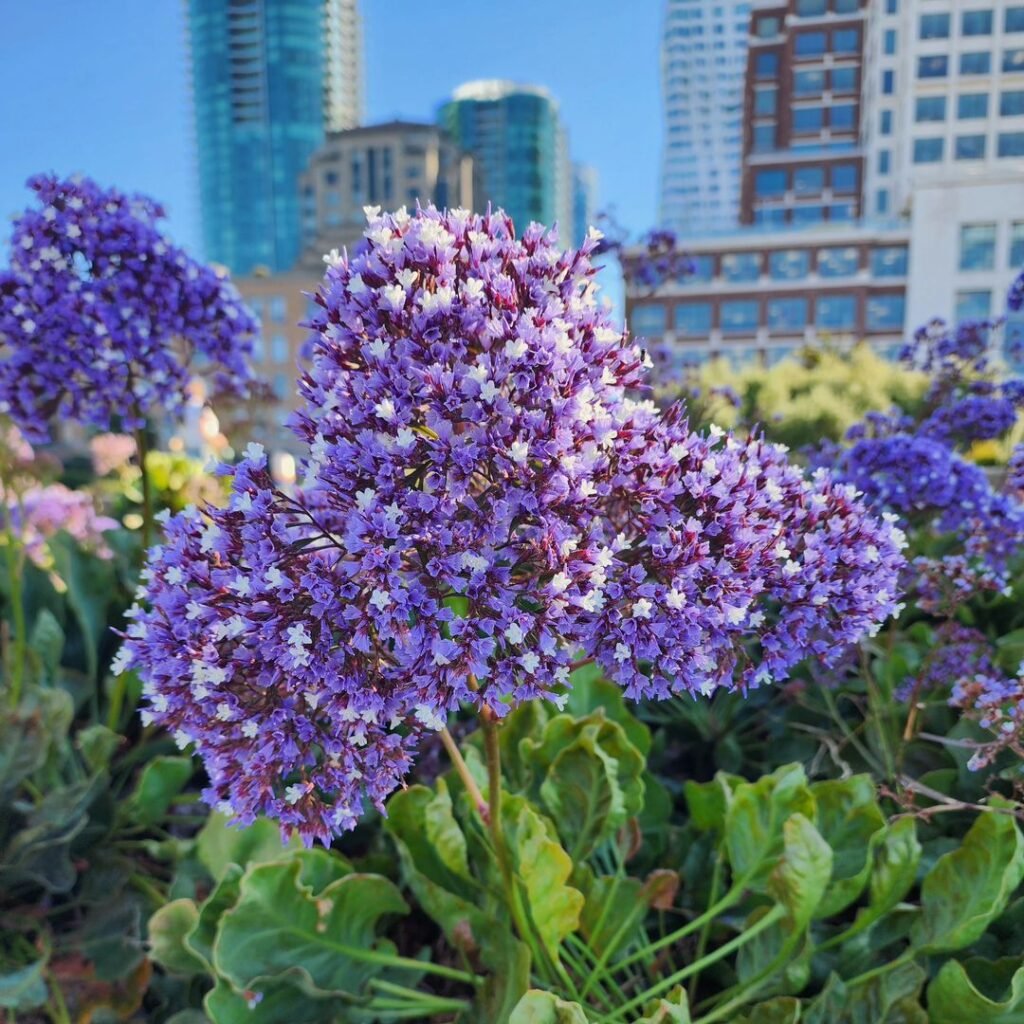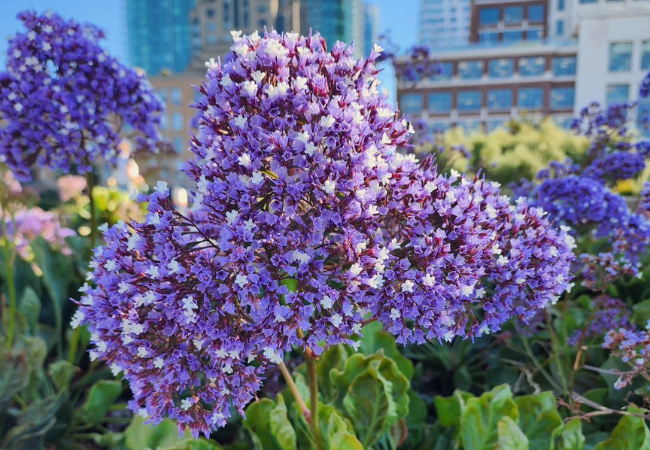Explore the versatile world of Statice Flowers. Learn about their varieties, cultivation tips and uses in fresh and dried arrangements. Perfect for gardeners and flower enthusiasts seeking long-lasting, colorful blooms.
Statice flowers, also known as Sea Lavender or Limonium, are prized for their delicate clusters of colorful blooms that retain their beauty long after being cut. These hardy plants are popular in both fresh and dried arrangements, making them a favorite among gardeners and florists alike. In this article, we’ll delve into the world of Statice and how to grow these enduring flowers.
Here’s an information chart for Statice:
| Category | Information |
|---|---|
| Botanical Name | Limonium spp. |
| Common Name | Statice, Sea Lavender |
| Plant Type | Perennial |
| Hardiness Zone | Zones 5-9 |
| Sun Exposure | Full sun |
| Soil Type | Well-draining, sandy or loamy soil |
| Watering | Moderate |
| Growth Habit | Clumping, low-growing |
| Height/Spread | Typically 12-36 inches tall, spreads 12-18 inches |
| Special Features | Long-lasting cut flowers, drought tolerant, attracts butterflies |
What Are Statice Flowers?

Statice belongs to the Plumbaginaceae family. These plants are known for their small, papery flowers that grow in dense clusters atop tall stems. Statice comes in a variety of colors, including purple, blue, pink, yellow and white.
Types of Statice
Some popular Statice varieties include:
- German Statice (Goniolimon tataricum): Known for its delicate pink or white flowers
- Common Sea Lavender (Limonium vulgare): A native European species with lavender-blue flowers
- Perezii Statice (Limonium perezii): Features larger, more vivid blue-purple flowers
Growing Statice
Planting
- Plant Statice seeds directly in the garden after the last frost or start indoors 6-8 weeks before.
- Choose a spot with well-draining soil and full sun.
- Space plants about 12-18 inches apart.
Caring for Statice
- Water moderately, allowing soil to dry between waterings. Statice is drought-tolerant once established.
- Fertilize with a balanced, water-soluble fertilizer monthly during the growing season.
- Deadhead spent blooms to encourage more flowers.
For more detailed care instructions, visit the Cooperative Extension System website and search for your local extension office.
Pests and Diseases
Statice is generally resistant to pests and diseases, but can occasionally face issues:
- Powdery mildew: This fungal disease can occur in humid conditions. Ensure good air circulation.
- Root rot: This can occur in poorly drained soils. Ensure proper drainage.
Uses of Statice in the Garden and Beyond
Cut Flower Gardens
Statice is excellent for cut flower gardens:
- Plant in rows for easy harvesting
- Mix with other long-lasting cut flowers
- Harvest when most flowers in the cluster have opened
Dried Flower Arrangements
Statice is prized for dried arrangements:
- Hang bunches upside down in a dark, dry area to dry
- Use in wreaths, bouquets and other crafts
- Combine with other dried flowers for colorful displays
For more information on drying flowers, visit the USDA National Agricultural Library and search for resources on flower preservation.
Landscape Use
Statice can be used effectively in landscapes:
- Plant in rock gardens or coastal gardens
- Use as a colorful border plant
- Incorporate into drought-tolerant garden designs
Pollinator Gardens
Statice attracts pollinators:
- Plant to attract butterflies and bees
- Use in meadow-style plantings
- Combine with other pollinator-friendly plants
Fun Facts About Statice
- The name “Limonium” comes from the Greek word “leimon,” meaning meadow, reflecting its natural habitat.
- Statice flowers symbolize remembrance and sympathy in the language of flowers.
- Some Statice species are used in traditional medicine for their astringent properties.
Statice in Floral Industry
Statice is valuable in the floral industry:
- It’s a popular filler flower in bouquets
- Its ability to dry well makes it useful for preserved arrangements
- The variety of colors available makes it versatile for different design styles
For more information on floriculture, visit the USDA Floriculture Crops page.
Statice flowers, with their vibrant colors and long-lasting blooms, are versatile plants that offer beauty both in the garden and in arrangements. Whether you’re growing them for fresh cut flowers, dried bouquets or as part of your landscape, these hardy plants provide enduring color and interest.
From their drought tolerance to their appeal to pollinators, Statice offers something special for gardeners and flower enthusiasts alike. With proper planting and care, you can enjoy these colorful, everlasting blooms for years to come. Happy gardening with Statice!
For more gardening tips and plant care guides, visit usagardenhub.com.







3 Comments on “Statice : Colorful Everlasting Blooms”